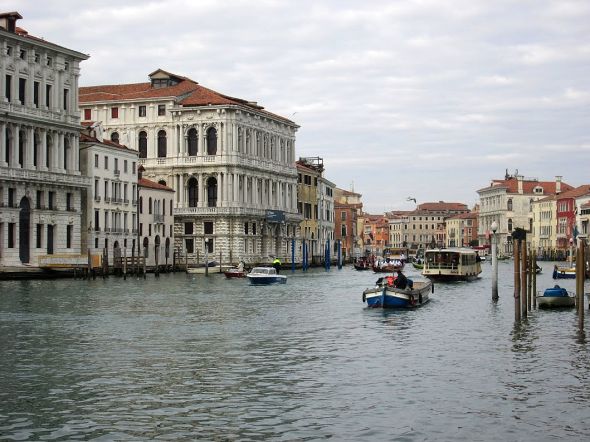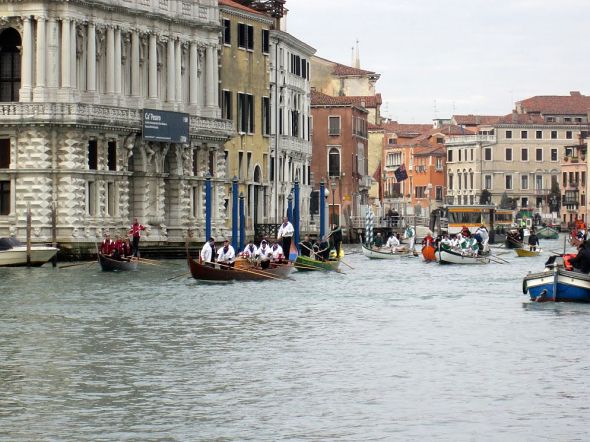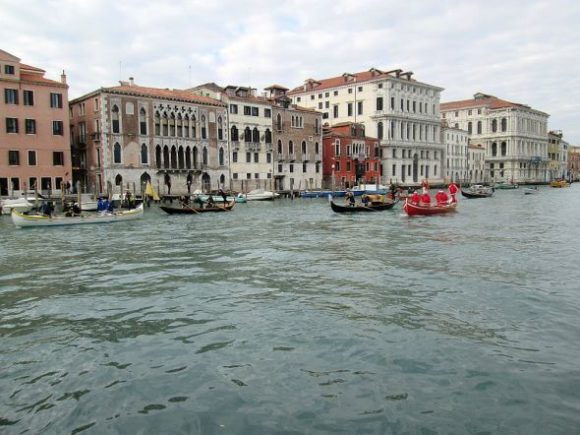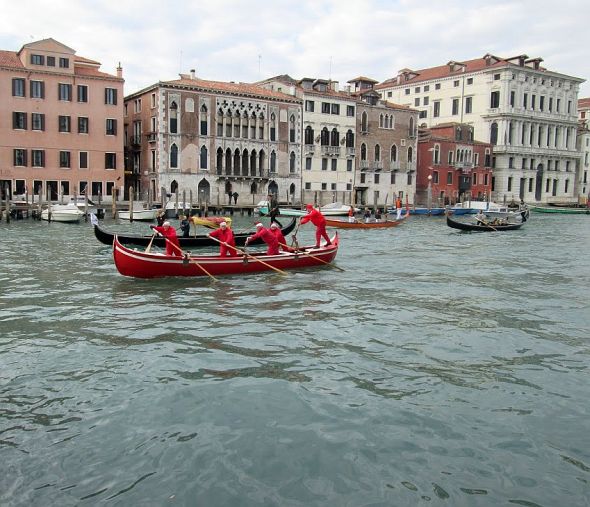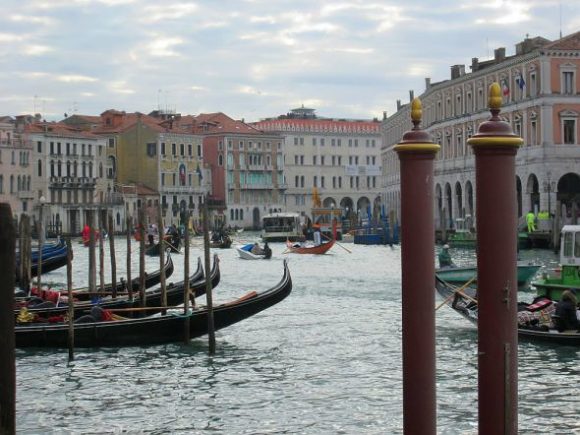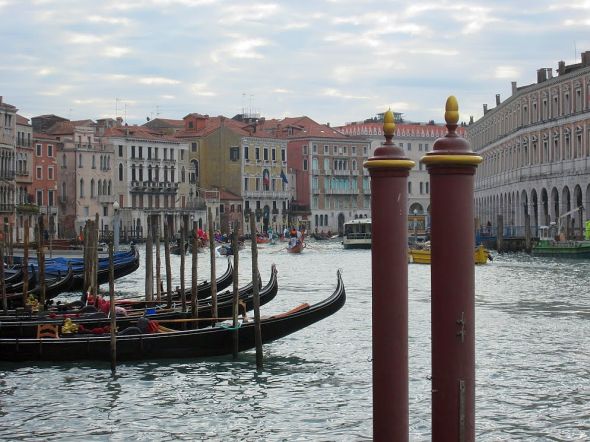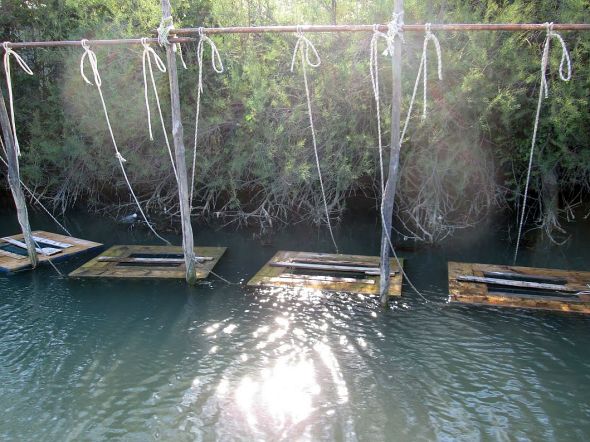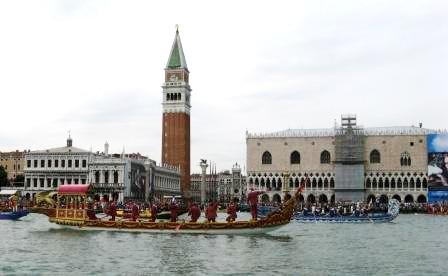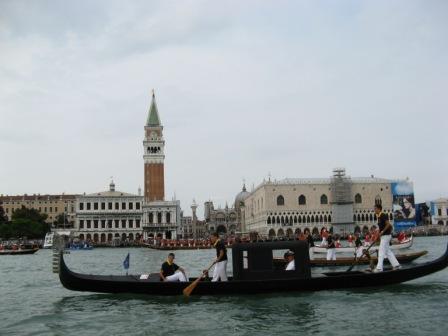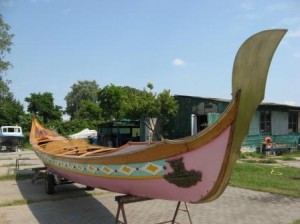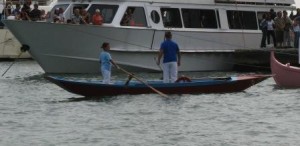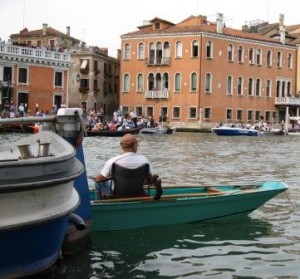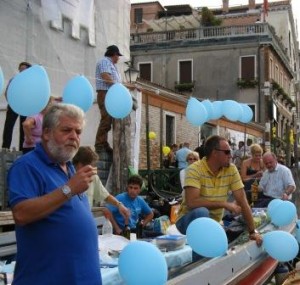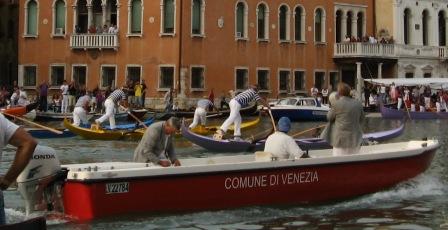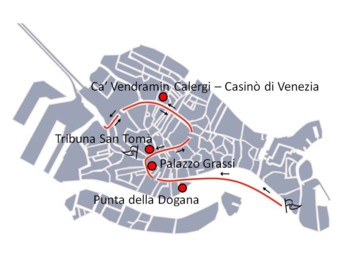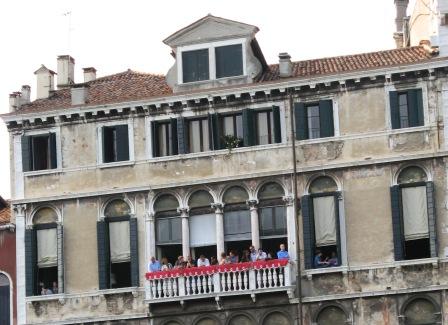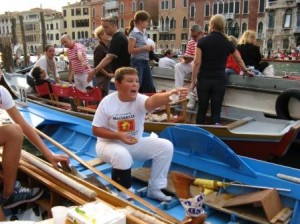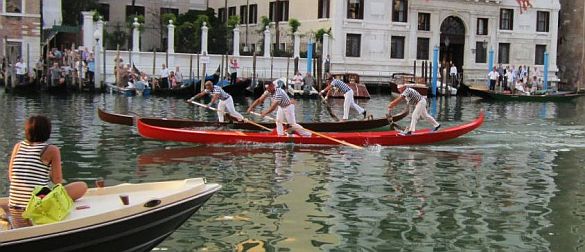
Over the past 15 years or so, attention in the world of Venetian rowing races has been focused, like the sun through a lens, on two pairs of rivals: Rudi and Igor Vignotto, gondoliers and cousins from Sant’ Erasmo who have been rowing together since they were nine and ten years old, and Giampaolo D’Este and Ivo Redolfi Tezzat, both of them also gondoliers, rowing together a modest 14 years until their last outing in 2015.
No need to say that the rivalry has been intense, which is what everybody wants in sports, and it created an equally intense partisanship among fans who pursued unwinnable arguments about why their idols are the best and what the hell is wrong with the other guys.
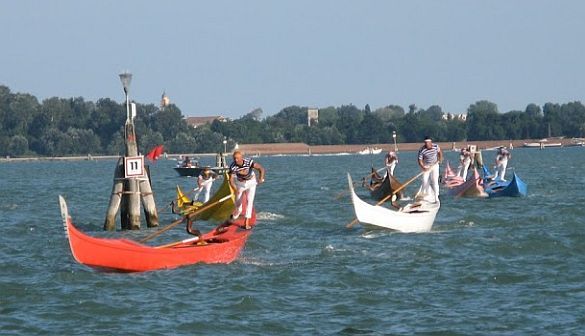
These four men faced off in almost every race each year, but the race that matters most is the Regata Storica, a roughly 40-minute struggle in the Grand Canal on the racing gondolas called gondolinos.
Winning the Regata Storica is a wonderful thing, but what each pair really wanted was to win it five years in a row, a feat which is almost impossible. If you manage it you have earned the title “re del remo” (king of the oar), which sounds a little lame but which, in fact, is a very big deal. Nobody has accomplished this since 1985.
The Vignotto cousins have won the Regata Storica a record 15 times, but never five years consecutively. D’Este and Tezzat have won 7 times, also never consecutively. It’s maddening for everybody, but what can you expect in a race that depends on skill, strategy, and sheer luck? 2009 was the fifth year in a row for D’Este and Tezzat — THE FIFTH YEAR — and 7 minutes into the race they capsized and nobody was even near them. There they were, floating by their boat as everybody else rowed past them. How embarrassing is that?
D’Este and Tezzat stayed together for a few more seasons, but being disqualified during the next year’s Storica (2010) and again in 2015 — and maybe other factors also — appeared to expunge whatever desire they still had to earn the crown. They both retired and concentrated on work, or backgammon, or their kids.
Since then the racing world has been pretty lackluster, as the Vignottos just kept on winning, practically whiling away the time on the course by checking their messages on their phones and discussing where to go on vacation. I know they love all those red pennants, but racking them up without breaking a visible sweat isn’t much fun after a while. I’ve heard it said.
But this year — new drama! A possible fourth consecutive win was on the horizon for the Vignottos when the required annual physical examination revealed that Igor’s career is over. Something to do with his heart, and cardiac situations are not to be taken lightly, or even permitted when it comes to getting your health certificate for the racing season.

And then Igor’s heart took a punch no apparatus could measure: His cousin Rudi called their lifelong rival, Giampaolo D’Este, to propose that they team up together. And D’Este said yes.
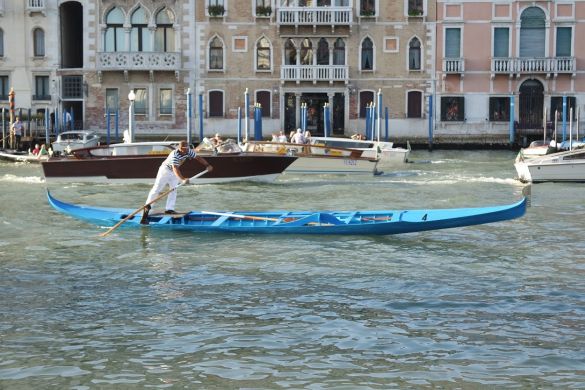
I don’t presume to know their reasoning, but seeing that each of them could sink a small cruiser with the weight of the pennants they’ve won, it might not be the need for more pennants. And seeing that the prize money is less than a working gondolier might earn in a week, it probably isn’t the money either.
It can only be the kingdom, the kingdom of the oar at long last, that could tempt them, even though 2018 will be the start of the five-year clock all over again.
Is this exciting? Maybe. And maybe not. Of course they have already been dubbed the “SuperCoppia” (super duo), because that’s obvious. But while it will be reasonably exciting to see this Voltron racing, it doesn’t necessarily promise to inspire the wild, thrilling, throat-lacerating excitement from fans and enemies alike that was the norm when these titans were rowing against each other.
Setting aside the prognostications for a few young fast-rising competitors, it’s very possible that the new duo will also win while checking their emails. Not made up: Their first race, today at Pellestrina on pupparinos, had them so far ahead that they throttled back to a stroll just to keep the distance between them and everybody else to something kind of reasonable and not, say, two kilometers.
One commentator remarked that this new match has been made “in the name of sport,” but it doesn’t seem very sporting to me. At least one person who was talking about it made a very interesting observation. “Well of course they’re going to win,” he said. “What fun is that? Me, I think each of them should have picked some younger partner — then we could really have seen some competition.”
That’s undoubtedly true, and a very original way of thinking. But if they’d done that, they might never get those crowns.

For anyone curious to see the seesawing of these champions from year to year, check this out; you can see how hard it has been to even get close to a fifth year in a row:
(V is Rudi and Igor Vignotto, D’E is D’Este with Tezzat):
2002 V first, D’E second (this is the first year D’Este rowed with Tezzat)
2003 D’E first, V second
2004 V first, D’E second
2005 D’E first, V second
2006 D’E first V second
2007 D’E first V second
2008 D’E first V (Rudi with Leone Mao, Igor undergoing a year of suspension) third
2009 V first D’E withdrawn, capsizing
2010 V first D’E disqualified
2011 D’E first V second
2012 V first D’E second
2013 V first D’E second
2014 D’E first V second
2015 V first D’E disqualified
2016 V first no D’E
2017 V first no D’E
2018 Voltron?

